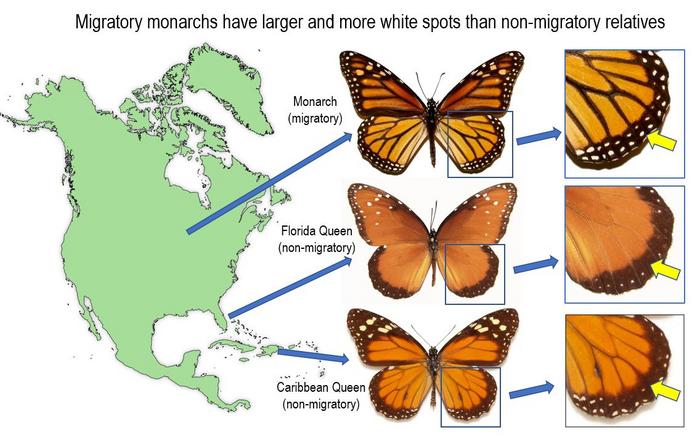###

Credit: Andrew K. Davis, using images courtesy of www.butterfliesofamerica.com with permission, CC-BY 4.0 (https://creativecommons.org/licenses/by/4.0/)
###
Article URL: https://journals.plos.org/plosone/article?id=10.1371/journal.pone.0286921
Article Title: How the monarch got its spots: Long-distance migration selects for larger white spots on monarch butterfly wings
Author Countries: USA
Funding: The authors received no specific funding for this work.
Journal
PLoS ONE
DOI
10.1371/journal.pone.0286921
Article Title
How the monarch got its spots: Long-distance migration selects for larger white spots on monarch butterfly wings
Article Publication Date
21-Jun-2023
COI Statement
The authors have declared that no competing interests exist.




